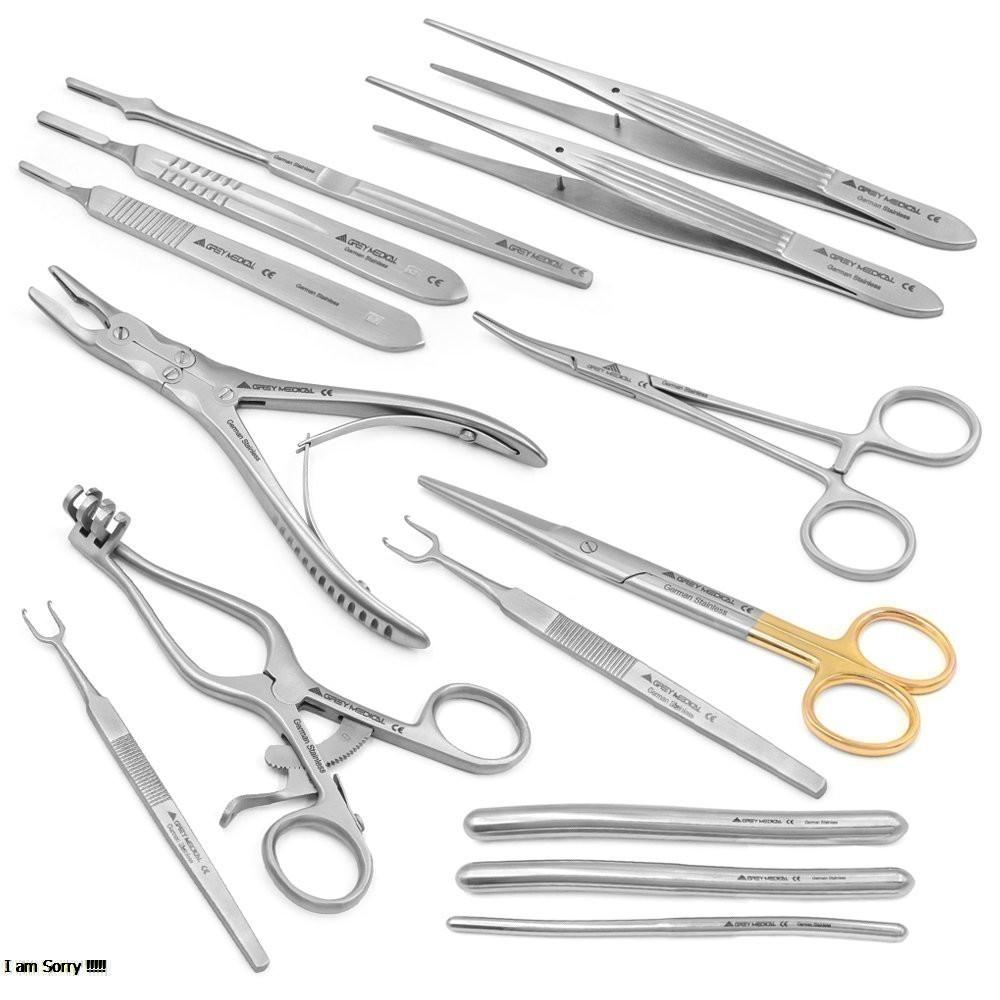The Essential Guide to Surgical Utensils

In the high-stakes environment of an operating room, success depends on the surgeon's skill, the team's coordination, and the quality of the tools they use. The instruments in a surgeon's hands are extensions of their expertise, allowing for precision and control that can mean the difference between life and death. These tools, known as surgical utensils, are the unsung heroes of modern medicine, each designed with a specific purpose to ensure the best possible patient outcomes.

Understanding the Categories of Surgical Instruments
Surgical instruments are not a one-size-fits-all collection. They are meticulously organized into categories based on their function. This classification helps surgical teams quickly identify and access the right tool for each step of a procedure, ensuring efficiency and safety.
Cutting and Dissecting
This is perhaps the most recognized category of surgical utensils. These instruments are used to cut through skin, tissue, and even bone. The most common example is the scalpel, which consists of a handle and a disposable blade. Scissors also fall into this group, with different types like Mayo scissors for cutting heavy tissue and Metzenbaum scissors for more delicate work. The sharpness and precision of these tools are paramount to minimize tissue damage and promote faster healing.
Grasping and Holding
During a procedure, surgeons need to hold tissues, organs, or needles securely. Grasping and holding instruments, often called forceps, are designed for this purpose. Tissue forceps, such as the Adson or DeBakey forceps, have fine teeth to grip delicate tissues without causing trauma. Hemostats are another critical tool in this category, used to clamp blood vessels and control bleeding. Their locking mechanism allows a surgeon to apply continuous pressure, freeing up their hands for other tasks.
Retracting and Exposing
To get a clear view of the surgical site, surgeons must hold back tissues and organs. Retractors are the instruments designed for this job. They come in various shapes and sizes, from small, handheld hooks used in delicate procedures to large, self-retaining retractors that can hold open an entire abdominal cavity. Proper use of retractors is essential for providing the surgeon with the access and visibility needed to operate safely and effectively.
The Materials That Matter in Manufacturing
The material used to create a surgical instrument is just as important as its design. The choice of material impacts the tool's durability, resistance to corrosion, and ability to be sterilized. The most common material is stainless steel, valued for its strength and resistance to rust.
Different grades of stainless steel are used depending on the instrument's purpose. For example, cutting instruments are often made from high-carbon steel to ensure they hold a sharp edge, while instruments that require more flexibility might use a different alloy. Other materials like titanium are also used for their lightweight properties and strength, particularly in microsurgery and orthopedic implants. The manufacturing process for surgical utensils is incredibly precise, ensuring each tool meets exacting standards for performance and safety.
The Role of Innovation in Surgical Technology
The field of surgical instruments is constantly evolving. Medical technology companies are continually researching and developing new designs and materials to improve surgical outcomes. This innovation leads to instruments that are more ergonomic for the surgeon, less traumatic for the patient, and more efficient in the operating room.
Companies like GreyMedical®, a privately owned medical technology company dedicated to innovation and excellence in the craft of surgical instruments, are at the forefront of this evolution. By focusing on quality craftsmanship and collaborating with surgeons, these companies help create the next generation of surgical utensils. Innovations can range from new coatings that reduce friction to advanced robotic instruments that offer unparalleled precision.
Proper Care and Sterilization
The life of a surgical instrument does not end when the procedure is over. Proper cleaning, care, and sterilization are critical to prevent infections and ensure the tools remain in optimal condition. The sterilization process, typically involving high-pressure steam in an autoclave, kills all microorganisms, making the instrument safe for the next patient.
Surgical teams follow strict protocols for handling and sterilizing surgical utensils. This meticulous attention to detail is a fundamental part of patient safety. Instruments are inspected for any signs of damage or wear, and those that no longer meet the standard are removed from service. This rigorous process ensures that every tool used in a procedure is clean, functional, and reliable.
Conclusion
Surgical utensils are far more than simple tools; they are a vital component of modern healthcare. From scalpels and forceps to complex retractors, each instrument plays a specific and critical role in the success of a surgical procedure. The careful selection of materials, precision in manufacturing, and constant push for innovation all contribute to creating tools that allow surgeons to perform their life-saving work with confidence. The next time you consider the marvels of medicine, remember the quiet but essential contribution of these finely crafted instruments.
- Art
- Causes
- Crafts
- Dance
- Drinks
- Film
- Fitness
- Food
- Spiele
- Gardening
- Health
- Startseite
- Literature
- Musik
- Networking
- Andere
- Party
- Religion
- Shopping
- Sports
- Theater
- Wellness


